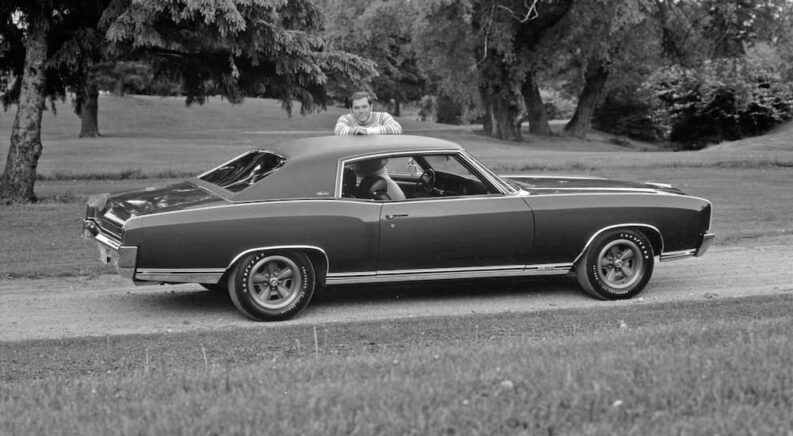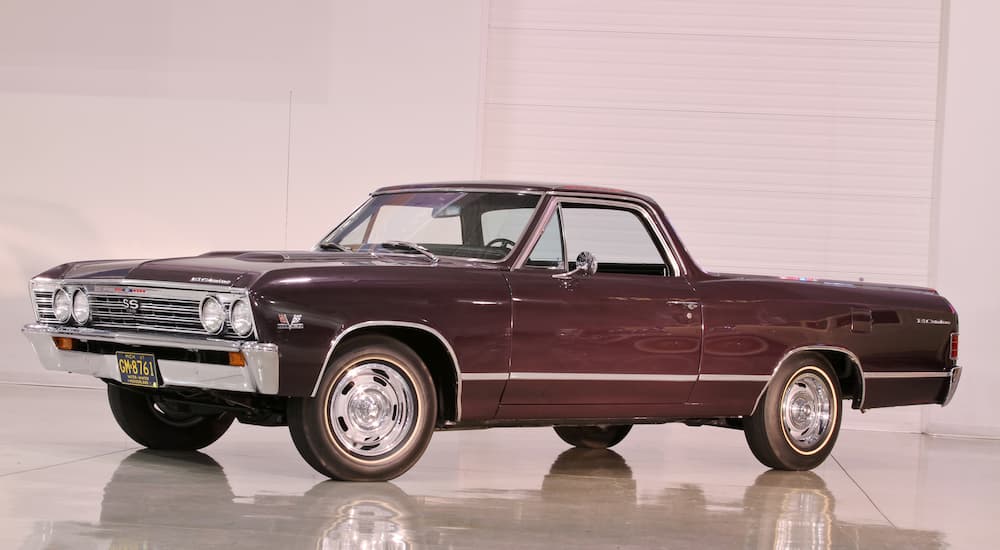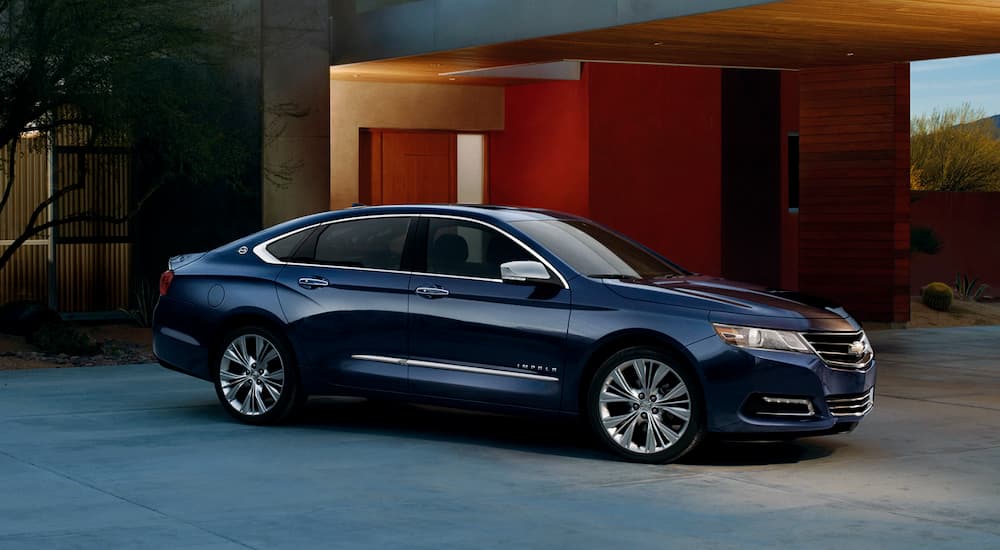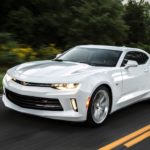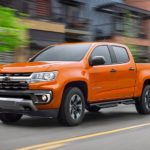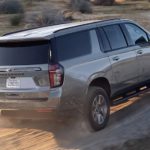There’s a saying that the only constant is change, and that’s true of the Chevrolet lineup. Wikipedia lists 74 former Chevy production models in the U.S. alone, plus 55 more overseas. It’s inevitable that over a century-plus, some vehicles would go to the great junkyard in the sky. Some are still available at a used Chevy dealer, but others can only be found with a lot of effort and dedication.
Admittedly, some of those vehicles deserved to get the zig. (I’m looking at you, Chevy SSR.) However, I think a few models deserve a second or even a third chance, whether with a twist for the modern age or by getting more of what made them famous. Here are five retired Chevy models I want brought back and how I can see them fitting into the present automotive landscape. Note I’m not including the Camaro because, despite reports of recent setbacks, there are still efforts afoot to revive the nameplate for a second time.
Monte Carlo
For decades, this was arguably Chevrolet’s leading performance vehicle, even more so than the Corvette. From 1970 to 1988 and again starting in 1995, it ruled the GM roost by blending power and luxury. Along the way, NASCAR legends like Dale Earnhardt Sr. and Jeff Gordon piloted Monte Carlos to endless championships.
After 2007, the Monte Carlo was escorted into retirement for a second time, and in that moment, I think it was deserved. When the Chevy Monte Carlo debuted in 1970, its 250-hp engine, 129 mph top speed, and slick three-speed manual transmission were among the best in the luxury coupe segment. By 2007, the base engine produced less horsepower, and competitors like the Ford Mustang had left it in the dust.
I think the Monte Carlo can succeed today by recapturing what made it a legend. Put in a Corvette-type engine (or at least a Corvette lite), add some performance suspension elements, restore the rear-wheel drive, and keep the sophisticated interior materials. The result would be a feisty midsize car and a budget-friendly alternative to luxury coupes from premium brands like BMW, Lexus, and Audi.
El Camino
The El Camino wasn’t the first utility coupe—Chevy introduced it because Ford’s Ranchero was so successful—but it’s the vehicle that ultimately defined the segment. Essentially a coupe muscle car with a pickup truck bed, the Chevy El Camino was a do-it-all steed with a unique look. But sales plunged in the 1980s, leading to the El Camino’s discontinuation after 1987. Chevy has made a few El Camino concept cars since then and reportedly considered bringing the vehicle back around 2010, but nothing ever came of it.
I think the biggest reason for its end was that, like the Monte Carlo, the El Camino got stuck in reverse. The second-generation coupe from 1964 to 1967 had engine options reaching 300 hp. By the final generation, the most you could get was 150 hp. The solution would be to combine a sleeker, more aerodynamic take on the original design with a beefier power plant. It could be a great opportunity for a hybrid or PHEV vehicle, capitalizing on the extra power while making a modern El Camino more efficient. I’d also make it RWD like the original, with optional AWD to hug the road when hauling.
S-10
Compact pickup trucks are back on the rise, gaining over 55% market share in the U.S. as recently as 2023. There have long been rumors about Chevy bringing its Latin American Montana small pickup truck stateside to compete against the Ford Maverick and Hyundai Santa Cruz.
Another option is to go back to the truck that started it all. Chevy was the first of the “Big Three” U.S. automakers to have a small pickup truck, producing the S-10 in the U.S. from 1982-2004. My favorite memory of them is watching Chevy S-10 pickups race in the Street Stock division at my local short track. They were great road trucks, too. There were a variety of engine and transmission options, a regular or extended cab, and even a long or short bed.
A modern S-10 could appeal to people who like truck styling and off-road capability but don’t need to haul 10,000-lb loads. Make it a slightly smaller version of the Colorado with a similar engine, bring back some of the fun packages like the Baja and Sonoma GT, and let it rip. Although the S-10 was discontinued for North America, it still lives in Brazil, with the Colorado being rebadged for that market.
Monza
As an upscale sibling of the Chevy Vega, the Monza subcompact is the shortest-lived vehicle on this list, only gracing North American streets from 1975 to 1980. But its distinct style and sporty handling have given the Monza a loyal following in the restoration market. (Today, Chevy still uses the Monza name for a compact sedan line in China.) With subcompact and compact vehicle sales on the rise, the time may be right for a new Monza generation.
To be successful, Chevy must fix what felled the Monza in the first place. The main issue is that the Monza was plagued with reliability issues, which theoretically should be fixed by advancements in automotive technology. Secondly, the Monza’s performance never really lived up to its appearance, as even the GM 350 small-block V8 option only made 125 hp. A present-day Monza needs a power plant worthy of a car named after a legendary Formula 1 track.
Finally, I believe the Monza suffered from too many options, which may have kept it from establishing an identity. Over a six-year span, there were seven engine choices, four transmissions, and four body styles (including a station wagon). The Monza 2+2 is the most visually appealing, so focus on that with two or three great powertrains, and I think Chevy has a winner.
Impala
It might feel weird to ask for a vehicle back that has already been axed twice, but hear me out. The first run of the Chevy Impala from 1958 to 1985 was a quintessential full-size Chevy B-body vehicle with great power, sleek styling, and the versatility to be everything from a family car to a race car. The people responded, making the Impala America’s best-selling car multiple times.
The new era from 2000 to 2020, on the other hand, was basically an Impala Lite. The performance was decent, with the final model offering 305 hp, and it was Chevy’s official entry in the NASCAR Cup and Xfinity Series for six years. But the 21st-century Impala had none of the original’s personality. Not to mention, Chevy decided, for some reason, to make the eighth and ninth generations a midsize sedan instead of a full-size sedan.
The recent discontinuation of the Malibu means Chevy no longer has a sedan offering in the U.S., and I think there’s still a place for one. So bring back the Impala with a good-sized modern engine or hybrid power plant, then restore the high-end looks and materials. That’s a pairing I would flock to.
Hoping What’s Old Is New Again
Do I have evidence that any of these vehicles are coming back? No. But I have history on my side. Two of the vehicles on this list (Monte Carlo and Impala) got a second lease on life before, and plenty of other famous vehicles have been brought out of retirement, including the Camaro, Blazer, Dodge Challenger, Toyota Supra, and Ford Bronco. Maybe someone at General Motors will find themselves drawn to one of these classic vehicles and decide to reinvent them for the 2020s and beyond. I can hope, if nothing else.

